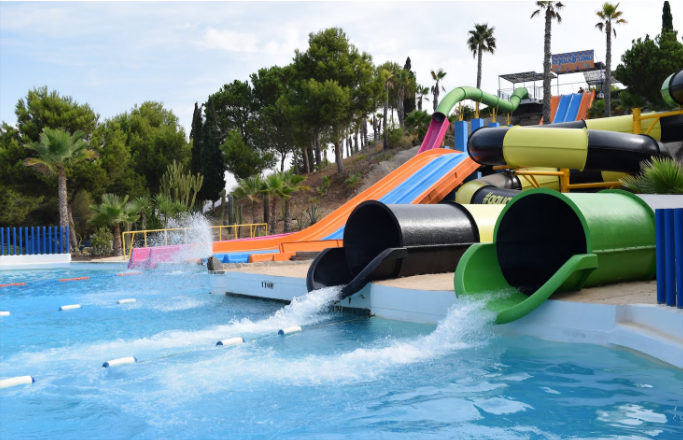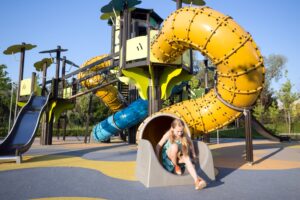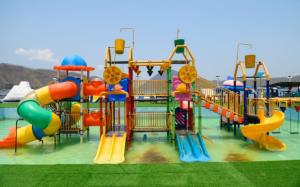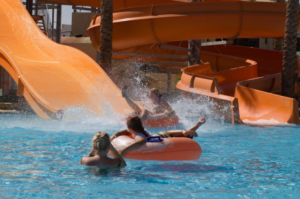Water parks are a haven of joy for families and thrill-seekers alike, offering a refreshing escape from the heat and a myriad of exciting attractions. To ensure the longevity and safety of the water playground equipment, proper maintenance is paramount. In this comprehensive guide, we’ll delve into the essential aspects of water park equipment maintenance, covering everything from routine inspections to addressing wear and tear. Whether you’re a water park owner, manager, or maintenance personnel, this guide will provide valuable insights into maintaining a safe and enjoyable water park experience.
Why Maintenance Matters:
Before we delve into the specifics of water park equipment maintenance, it’s crucial to understand why maintenance matters. Proper maintenance not only extends the lifespan of the equipment but also ensures the safety of park visitors. Regular inspections and timely repairs can prevent accidents, enhance the overall guest experience, and contribute to the reputation and success of the water park.
- Routine Inspections:
Regular inspections are the backbone of water park equipment maintenance. Schedule routine inspections for all water playground equipment, including slides, splash pads, and interactive features. This involves a thorough examination of structural integrity, fastenings, and any potential signs of wear or damage. Water play equipment manufacturers often provide guidelines for inspection intervals and specific points to check.
- Create a Maintenance Schedule:
Develop a comprehensive maintenance schedule that outlines routine inspections, preventive maintenance tasks, and any necessary repairs. This schedule should be based on the manufacturer’s recommendations and take into account the intensity of use during peak seasons. A well-organized maintenance schedule ensures that all equipment is regularly assessed, reducing the likelihood of unexpected issues.
- Address Wear and Tear Promptly:
Wear and tear are inevitable in water parks due to the constant exposure to water, sunlight, and heavy use. It’s crucial to address any signs of wear promptly. This includes worn-out surfaces, loose bolts, or fading colors. Quick intervention prevents small issues from escalating into major problems, saving both time and resources in the long run.
- Training for Maintenance Personnel:
Ensure that maintenance personnel are adequately trained to identify potential issues and carry out repairs. Training programs provided by water play equipment suppliers or manufacturers can enhance the skills of maintenance staff, enabling them to perform effective and efficient inspections and repairs.
- Water Quality Management:
Water quality plays a significant role in the maintenance of water park equipment. Regularly test and maintain the water quality in pools and splash pads to prevent the build-up of algae, mold, and other contaminants. A well-maintained water treatment system contributes not only to equipment longevity but also to the health and safety of visitors.
- Lubrication of Moving Parts:
Many water park attractions involve moving parts such as slides, swings, and interactive features. Proper lubrication of these moving parts is essential to prevent friction-related damage and ensure smooth operation. Use lubricants recommended by the water play equipment manufacturers to avoid compatibility issues.
- Winterization Process:
In regions where winter temperatures can drop significantly, a proper winterization process is crucial. This involves draining water from pipes and equipment to prevent freezing, which can cause damage to the structure. Follow the manufacturer’s guidelines for winterization to protect your water park equipment during the off-season.
- Documentation of Maintenance Activities:
Maintain detailed records of all maintenance activities, including inspections, repairs, and replacements. This documentation serves multiple purposes, from tracking the history of equipment maintenance to providing evidence of compliance with safety standards. It can also be invaluable for troubleshooting recurring issues and planning for equipment upgrades.
- Collaboration with Manufacturers:
Establish a collaborative relationship with water play equipment suppliers and manufacturers. They can provide valuable insights into maintenance best practices, offer technical support, and supply genuine replacement parts when needed. Some manufacturers also offer maintenance packages or on-site training to ensure that water park operators have the knowledge and tools to keep equipment in top condition.
- Budgeting for Maintenance:
Include a dedicated budget for water park equipment maintenance in your overall financial planning. Recognize that maintenance is an ongoing investment that contributes to the safety and success of your water park. A well-maintained park not only attracts more visitors but also minimizes the risk of costly repairs or replacements.
Conclusion:
In conclusion, water park equipment maintenance is a multifaceted undertaking that requires careful planning, regular inspections, and collaboration with water play equipment manufacturers and suppliers. By prioritizing routine maintenance, promptly addressing wear and tear, and investing in training for maintenance personnel, water parks can ensure a safe and enjoyable experience for visitors. Remember, a well-maintained water park not only extends the life of the equipment but also creates a positive and memorable experience for all who come to splash, slide, and enjoy the aquatic wonders.






